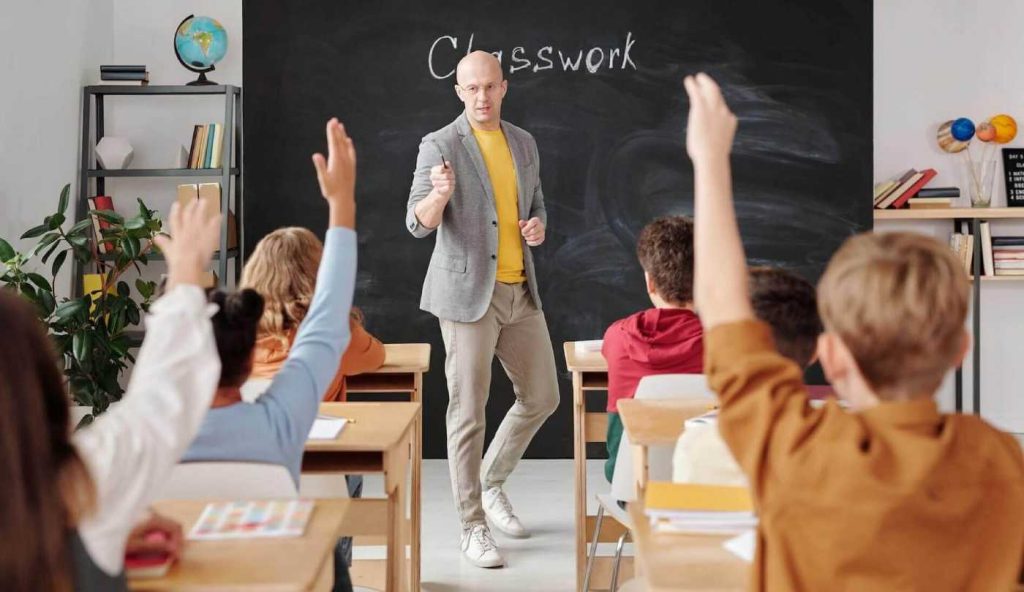One of a teacher’s most significant challenges is keeping students engaged, whether wrangling kindergarteners in from recess and trying to focus their energy on an art project or holding the attention of high school seniors in the spring when daydreams of the newfound freedom of life after high school occupy their minds.
The best way to describe or define active learning is that it is a process that puts students, not the teacher, at the center of their own learning. Active learning occurs when students are fully immersed in the course material and, in some cases, even leading and teaching it. This teaching style has been proven to achieve desired academic outcomes, with students invested in the material they are exploring and stimulated by the activities in the classroom.
Active learning relies heavily on problem-solving and initiative, with students playing a crucial collaborative learning role with their instructor and peers. Active learners gain critical skills needed to analyze and synthesize content that will benefit them throughout the rest of their lives, whether they pursue higher education, trade school, or move directly into the working world.
You can incorporate active learning into every phase of teaching. Read on to learn how to establish active learning spaces with these simple yet effective techniques.
Put the Lecture on Pause

It is easy for teachers to lecture to a large class for fairly long periods on a subject they have mastered, but students will become bored or distracted if limited to this kind of teaching only.
This example is why student engagement in a traditional classroom is lacking. The instructor should be mindful of the need to take specific and deliberate pauses to allow students to get involved. After 10 to 15 minutes of presentation, stop and engage the students in group and class discussions to share feedback on what has been discussed, pose questions, debate points, and even work in pairs to discuss the material. Taking these five-minute breaks to allow students to participate in the teaching process will increase their engagement and aid in their retention of the material.
Act it Out
Role-playing is an incredibly effective way to get students engaged, and it is by no means limited to fine arts classes! You can turn anything into a role-playing exercise, from a civics lesson to a study of the achievements of a particular chemist.
By encouraging students to step into the role of a specific character, they become even more immersed in the lesson and find ways to connect to the subject matter. You might ask a student to think about how he would have handled a dilemma that set a medical researcher back in his work or how she would have calmed her nerves before making a speech in front of the United Nations.
The best teachers help their students connect to the material, even if it seems they have nothing in common with what is being studied. Once they connect the dots with how their lives relate to what they learn in school, they become more invested and interested. Role-playing can also bring humor and levity to the classroom, making it a fun, active learning method for students and teachers.
The One Sentence Challenge
To sharpen critical thinking and analysis skills, students in active learning environments can respond to the “one-sentence challenge.” After teaching with a lecture, video, or other presentation, instructors should ask students to summarize the point of the lesson in one sentence. This exercise pushes them to think critically and use language carefully to summarize the main points. It also allows teachers to see if the material has resonated and made sense to the students or if more work needs to be done to convey the message.
Start with a Problem
Problem-solving is one of the most essential skills for educators to teach, and there is no better way to do this than by handing the problem over as an active learning task. Start the lesson by identifying a problem and break students into small groups to work together to solve it.
Resist the urge to step in and do the work for them: give them tools and additional resources, but let them do the real work of problem-solving on their own, at least to a point. Once the groups have completed their work or you reach a natural stopping point, have them present their solutions to the class.
Three’s Company
Another effective way to engage students as active learners is with an exercise intended for groups of three. Have the students conduct interviews, alternating roles as the interviewer, interviewee, and note-taker.
These interviews and student interaction will help them become active listeners and active learners. It also strengthens peer relationships, which can significantly impact academic success. You can assign topics as serious or as frivolous as you want. Encourage the groups to discuss each interview after it is complete and offer feedback and constructive criticism on what could improve the next one.
Turn It into a Game

Any time you turn a lesson into a game, you stand a better chance of holding your students’ attention. Games appeal to students of all ages, and if you can incorporate technology, even better! Offer prizes such as homework passes to further incentivize student participation in this learning strategy. Games are one of the easiest and most effective ways to turn your classroom into an active learning environment.




